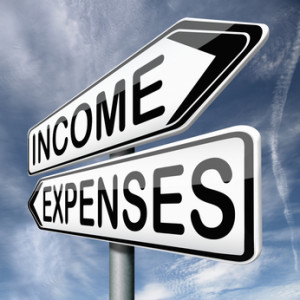 Once you have a balance sheet, the next crucial building block in creating a wealth plan is preparing your income statement. The income statement is your cash flow analysis. It looks at the money coming in and going out. The difference between a balance sheet and income statement is like looking at a photo vs. a video. The balance sheet is a snapshot capturing a certain moment in time. On the other hand, the income statement is more like a video showing you what’s happening every month over time.
Once you have a balance sheet, the next crucial building block in creating a wealth plan is preparing your income statement. The income statement is your cash flow analysis. It looks at the money coming in and going out. The difference between a balance sheet and income statement is like looking at a photo vs. a video. The balance sheet is a snapshot capturing a certain moment in time. On the other hand, the income statement is more like a video showing you what’s happening every month over time.
What comprises your personal income statement or your cash flow analysis? The first piece is your income or revenue; the second is your expenses.
Income:
Your monthly income includes your pay from work, interest earned on cash accounts, dividends and capital gains from investments, interest earned from any personal loans you made, rent you receive from others and any other items that add to your cash account.
The best way to determine pay from your job is from your pay stubs or looking at the amount you take out of your business to pay yourself. Interest on accounts, dividends and capital gains are found on your monthly statements or online account information. Interest on personal loans and rent are taken from the checks you receive or by reviewing your savings and checking accounts.
Expenses:
What about figuring out your expenses? Most people know the big items they have to pay, but they don’t really track every expense because they think it’s difficult, time-consuming, or because some part of them just doesn’t want to know. However, tracking expenses is one of the biggest keys to obtaining and maintaining wealth that we have available to us. Imagine what would happen to a business if it couldn’t calculate the amount of money it was spending. If it’s a disaster for a business not to know, why would you think it’s different for you?
Your expenses should be broken down into two categories: fixed and discretionary.
Fixed expenses are those that need to be paid in order for you to survive (not your double latte every morning). Fixed expenses can be further broken down into fixed amount expenses – meaning they will be the same amount every period, and variable fixed expenses which are expenses that must be paid but may be different every month. For example:
- Fixed amount expenses include your mortgage, rent, real estate taxes, insurances (auto, life, disability, homeowners), bank loans, personal loans, support payments, etc.
- Variable fixed expenses are things like basic food, heat, gas, electricity, telephone, essential clothing, income and other taxes, medical bills (doctors, prescriptions), car and transportation, repairs and maintenance.
Discretionary expenses are everything else you spend money on including entertainment, vacations, education, discretionary clothing, eating out, charitable contributions, recreation, health and beauty care, gifts and incidentals.
There are many online programs you can utilize or simply use an excel spreadsheet or pencil and paper. To figure out your expenses, review your checkbook, credit card statements and receipts for cash purchases every month.
By tracking your income and expenses on a monthly basis over the course of a year, you will gain a clear picture of where your money is going and how you might be able to save more in order to achieve your financial goals.
Great article, exactly what I wanted to find.